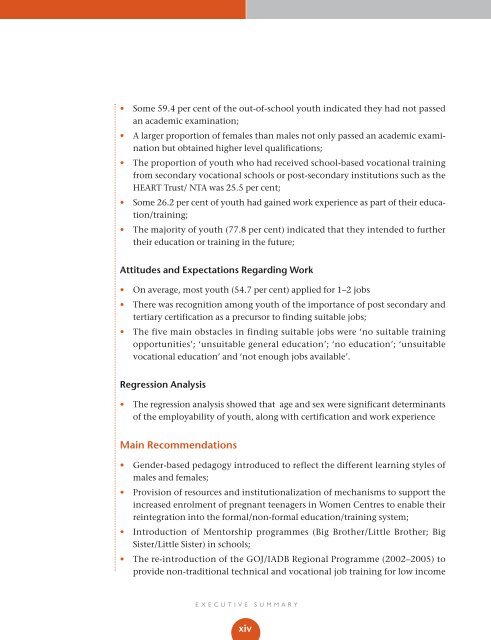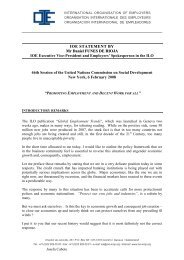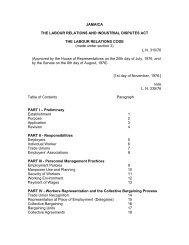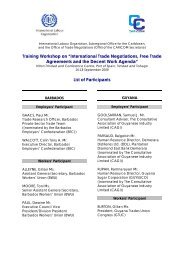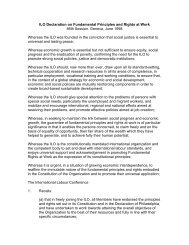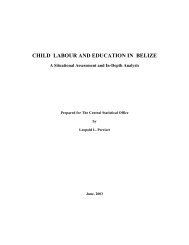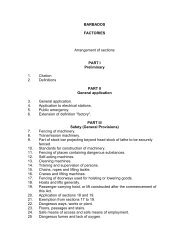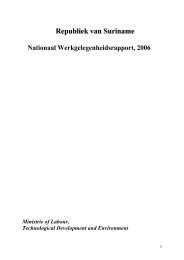The Transition of Jamaican - International Labour Organisation ...
The Transition of Jamaican - International Labour Organisation ...
The Transition of Jamaican - International Labour Organisation ...
You also want an ePaper? Increase the reach of your titles
YUMPU automatically turns print PDFs into web optimized ePapers that Google loves.
• Some 59.4 per cent <strong>of</strong> the out-<strong>of</strong>-school youth indicated they had not passed<br />
an academic examination;<br />
• A larger proportion <strong>of</strong> females than males not only passed an academic examination<br />
but obtained higher level qualifications;<br />
• <strong>The</strong> proportion <strong>of</strong> youth who had received school-based vocational training<br />
from secondary vocational schools or post-secondary institutions such as the<br />
HEART Trust/ NTA was 25.5 per cent;<br />
• Some 26.2 per cent <strong>of</strong> youth had gained work experience as part <strong>of</strong> their education/training;<br />
• <strong>The</strong> majority <strong>of</strong> youth (77.8 per cent) indicated that they intended to further<br />
their education or training in the future;<br />
Attitudes and Expectations Regarding Work<br />
• On average, most youth (54.7 per cent) applied for 1–2 jobs<br />
• <strong>The</strong>re was recognition among youth <strong>of</strong> the importance <strong>of</strong> post secondary and<br />
tertiary certification as a precursor to finding suitable jobs;<br />
• <strong>The</strong> five main obstacles in finding suitable jobs were ‘no suitable training<br />
opportunities’; ‘unsuitable general education’; ‘no education’; ‘unsuitable<br />
vocational education’ and ‘not enough jobs available’.<br />
Regression Analysis<br />
• <strong>The</strong> regression analysis showed that age and sex were significant determinants<br />
<strong>of</strong> the employability <strong>of</strong> youth, along with certification and work experience<br />
Main Recommendations<br />
• Gender-based pedagogy introduced to reflect the different learning styles <strong>of</strong><br />
males and females;<br />
• Provision <strong>of</strong> resources and institutionalization <strong>of</strong> mechanisms to support the<br />
increased enrolment <strong>of</strong> pregnant teenagers in Women Centres to enable their<br />
reintegration into the formal/non-formal education/training system;<br />
• Introduction <strong>of</strong> Mentorship programmes (Big Brother/Little Brother; Big<br />
Sister/Little Sister) in schools;<br />
• <strong>The</strong> re-introduction <strong>of</strong> the GOJ/IADB Regional Programme (2002–2005) to<br />
provide non-traditional technical and vocational job training for low income<br />
EXECUTIVE SUMMARY<br />
xiv


